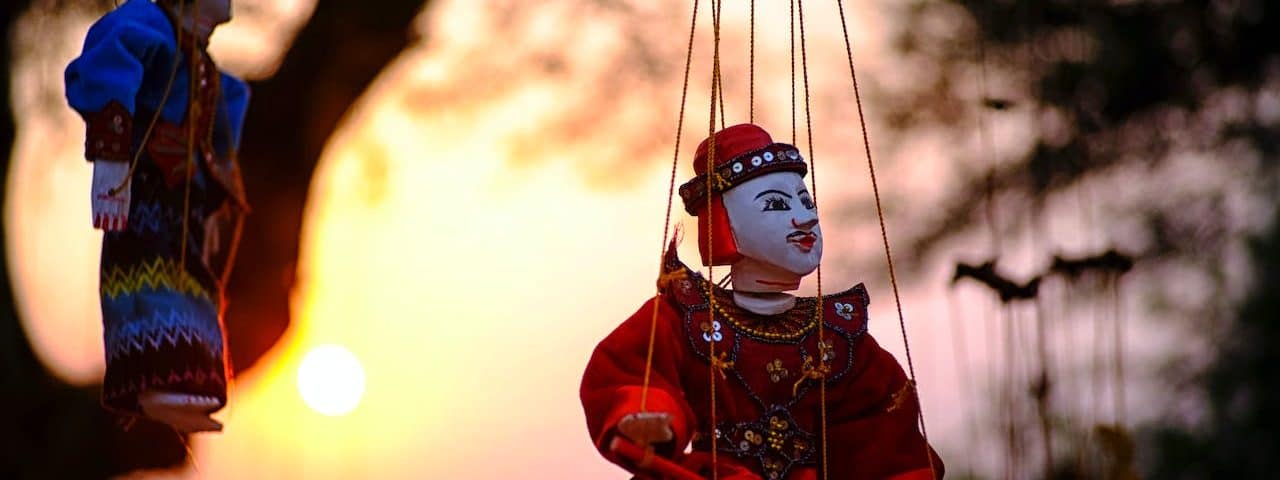Puppetry has captivated audiences for centuries, dating back to ancient civilizations like Greece and Egypt. All around the world, traditional puppet shows still hold cultural and historical significance. Modern-day puppetry has evolved into a versatile craft, with puppeteers entertaining young and old audiences across various formats like film, television, and theatre. Each and every puppet show is a unique story brought to life by a masterful team of artists and technicians. In this blog post, Scott Biski will delve into the fascinating world of puppeteering from sketch to stage.
The Puppetry Process
The puppetry process begins with a sketch. A puppeteer will design their characters, breathing life into them alongside an artistic team, who help develop the concept and design of the puppets to be used. Once the sketches have been completed, the puppets are built; depending on the form, they can be created through various techniques such as fabric, foam, wood, and even 3D printing.
Creating a puppet is an art, taking hours of meticulous detail to ensure the characters come to life. Each puppeteer needs to work with their puppet one-on-one, getting to know their character’s quirky movements and unique personality traits.
Puppeteers Learn To Bring The Characters To Life
The next step involves rehearsals, where the puppeteers learn to bring the characters to life. This process takes time and requires many hours of practice to ensure that each movement and gesture fits the character’s personality and movements.
Puppeteers must learn the skill of multi-tasking as they control their character’s facial expressions and body movements. Eye focus is critical, and the puppeteer must enhance the live puppet effect, making the audience believe the puppet is breathing, thinking, and feeling with their artistry.
Once the puppeteers have mastered their craft, the show moves into production, where the puppets come to life on stage. Each character has a unique personality and backstory, carefully crafted to entertain and engage the audience. However, the real magic of puppetry lies behind the scenes.
Puppetry takes a skilled team of performers, including sound and lighting technicians, designed to prompt and support the performers on stage. The production unfolds with precision as the stagehands work together seamlessly behind the scenes, bringing the sets to life. This work behind the scenes is critical in presenting the seamless illusion of life necessary to engage the audience.
The Essence Of Puppetry
The essence of puppetry is the emotion the characters can evoke in their audiences. The craft works on multiple levels, using laughter, tears, and shock to manage the audience’s emotions. It’s a unique art form that can bring families and friends together, creating lasting memories that will last a lifetime. Most puppeteers create interactive shows, encouraging their audience to participate, often leaving them entertained and mesmerized.
In addition to stage productions, puppetry has also made its mark in film and television. With technological advances, puppets can be brought to life through computer-generated imagery (CGI), creating even more realistic characters on screen. However, many still prefer traditional techniques and craftsmanship because they add a realism element that CGI cannot replicate.
The Future Of Puppetry
At its core, puppetry is an art form that continues to evolve and adapt with each generation. As technology advances, new techniques are being developed to enhance the craft further. In recent years, productions have incorporated more diverse forms of puppetry, including shadow puppets and marionettes, adding a new dimension to performances.
Puppeteering has also become more accessible, with online platforms and social media providing a platform for puppeteers to showcase their work. This has opened up new opportunities for collaborations and cross-cultural exchanges, allowing puppetry to transcend borders and reach global audiences.
Conclusion
Puppetry is a diverse craft, with an equally diverse range of puppets, from marionettes to hand puppets, shadow puppets, and object manipulation. Whether it is a small performance for family and friends or a large-scale professional production, puppetry is a craft that can bring wonder and surprise to audiences of all ages. Creating a puppet show that engages audiences without breaking the fourth wall takes skill and creative flair. So, sit back, relax, and let yourself be drawn into the fascinating world of puppetry, where an entire world of enchantment and wonder awaits.
